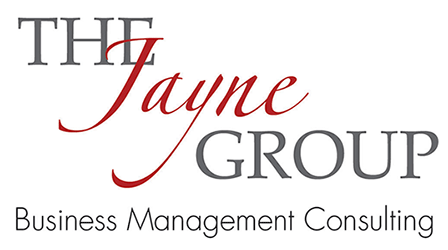The Clarity of a Compass
Amidst uncertainties, the value of strategic planning looms large
At a time when a global pandemic has thrust so many businesses into a period of uncertainty, plans for growth have been altered or put on hold. In the early days of the crisis, many decision-makers were forced to implement a number of structural and logistical changes just to remain operational. Six months later, a large number of companies remain in a surreal sense of stasis and issues that existed prior to the pandemic have been exacerbated by feelings of an uncertain future.
But every crisis also presents opportunity. For many companies, this is an ideal time to conduct essential self-reflection and engage in the important process of near term and long-term strategic planning.
But what does that process look like? Devising and implementing a strategic business plan is just one piece of a larger puzzle that takes time, commitment, and expert guidance from professionals who understand how to identify issues and inefficiencies, restructure and reposition companies, optimize operations and align processes with core values and strategic goals.
Talk the talk
Strategic planning starts with conversation. A number of conversations, actually. That typically includes one-on-one sessions with all C-Suite personnel, as well as sitting down with all key management figures (VPs, Directors, Managers). These discussions are private, extensive, and comprehensive. Employees are encouraged to share both their frustrations and their aspirations, as well as be given an opportunity to offer their own strategic input. To be clear, these sessions are intended to be the first step in the process of identifying common themes that emerge, clarifying organizational objectives—as well as the obstacles that are compromising a company’s ability to achieve those objectives.
The obstacles course
With these conversations conducted and essential information in hand, the next step is a thorough strategic planning session with key stakeholders (C-Suite employees and their direct reports). Anonymous feedback is shared, key themes are presented, and decision-makers are presented with a detailed breakdown of core issues and structural liabilities. Specifics vary, of course, but common issues include poor communication (especially between departments), lack of a clear vision or product development, inefficient or even counterproductive processes, and not having the right tools or the right resources.
Oftentimes, organizations are too “flat,” with insufficient opportunities for advancement. It’s important to note here, to make this process effective, it’s not enough to identify the issues, but to get to the reason or reasons behind those issues.
Questions—and answers
When asked to define their company’s overall business strategy, too few employees—even senior leaders—can answer with any kind of clarity. Across many organizations, not only is there no road map, there is little sense of how an individual’s work connects to the overarching strategic goals.
That’s a problem.
Solving that problem is the next step in the strategic planning process, and it requires asking tougher and more specific questions aimed at identifying obstacles and zeroing in on solutions:
What business are you in?
It’s surprising how often people don’t know or cannot answer this fundamental question uniformly. A company might describe themselves as being in the remote control business, for example, while their actual value proposition is much broader, and could better be described as the “wireless control technology” business.
What do you do well?
The answer to this might make it clear that a company that thinks of itself as a provider of products is actually a service company at its core. It may even reveal that a company is in the wrong business altogether!
Who are your customers?
Who are our customers and a breakdown within that customer base of what they want to buy is the first step. Attitudinal segmentation—not just what different groups of customers are buying, but why they buy—is essential information. Many customers will buy the same product or service for very different reasons – that’s the critical why, which is needed for targeted messaging and being able to shorten the sales selling cycle.
These questions sound simple. But the answers may be less obvious than they seem on the surface. Answering questions like these will ultimately yield new opportunities, new products, and new services, with access to new markets and new customers—provided you can structure your company to make that happen.
The specifics of what that strategic shift looks like will vary and will typically be a combination of operational/structural/personnel changes. By far the most common, however, is simply moving people into positions where their strengths can be better utilized. Employees who are in the “right” seat will be both more fulfilled and more effective, and the company will benefit as a result.
The core value connection
A critical and all-too-often overlooked step in the strategic planning process is connecting structural and operational changes to core values. Drawing clear connections between core values and key strategies makes needed changes more “sticky,” and creates important clarity about not just the big picture, but about the roles and responsibilities required to create it.
When the strategic planning process is complete, every department head should be crystal clear about what they need to do to fulfill those key strategies and deliver on the goals of the organization. They will be able to devise a tactical department plan to make that happen, and they will be able to adapt and evolve that plan as needed going forward. The resulting clarity also helps create an environment that attracts and retains the right talent. Because performance reviews will connect directly to the key strategies, employees will not only have clarity and direction, but understand how critically their work contributes to the company meeting its objectives. Focus and direction leads to greater efficiency and productivity—not to mention improved morale. When executed correctly, this process can change the culture of a company significantly – and quickly.
Reaching the summit
When it comes to implementing an effective strategic planning review for your company, it may be heartening to hear that there is nothing new under the sun. Businesses large and small tend to have the same types of common problems—with solutions that are often straightforward.
The trick is to identify those problems, which is where a turnaround expert or an experienced strategic planning consultant comes into play. The right partner can steer you in the right direction, not just acting as a counselor, but as a true partner. Subject matter experts at strategic planning bring insight, experience and expertise, but they also have critical objectivity and outside perspective—with no preexisting biases or ego. The best also have access to an established network of trusted professional partners that can deliver the specific tactical and service needs required to execute a strategic pivot. Like a Sherpa, success is measured not on individual achievements or accolades, but on how often and how well they help others reach the summit.
The goal of any truly valuable strategic planning expert is not to hang around, but to transfer knowledge: to give a company the tools, direction and guidance they need to thrive going forward. And at a time when there is so much uncertainty in the world and changes are needed quickly, the confidence that your company is on the right path—and that you have the knowledge and the skillset required to stay on that path—is an invaluable asset.
Is your organization in need of a partner to help guide you through the strategic planning process? Learn more about The Jayne Group and our services by clicking here.

